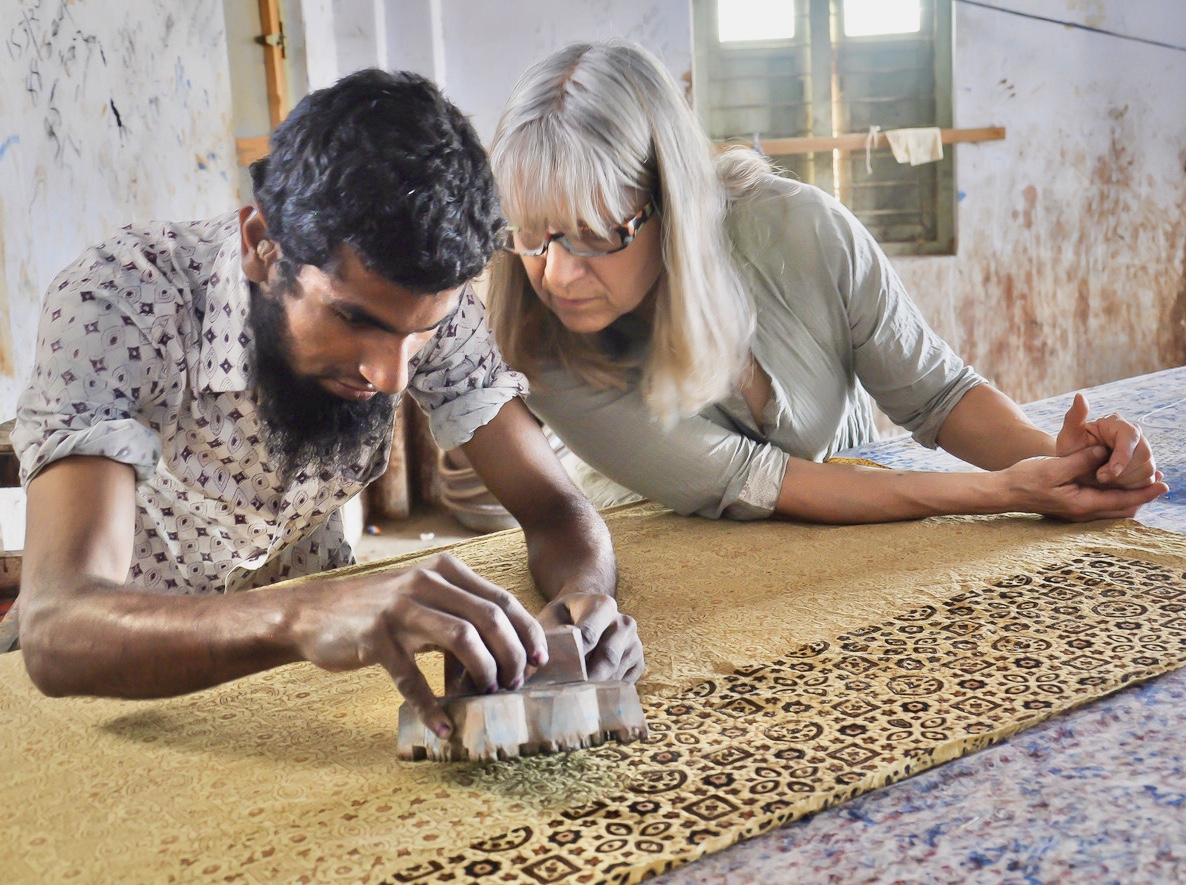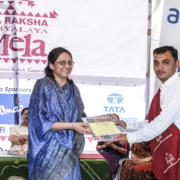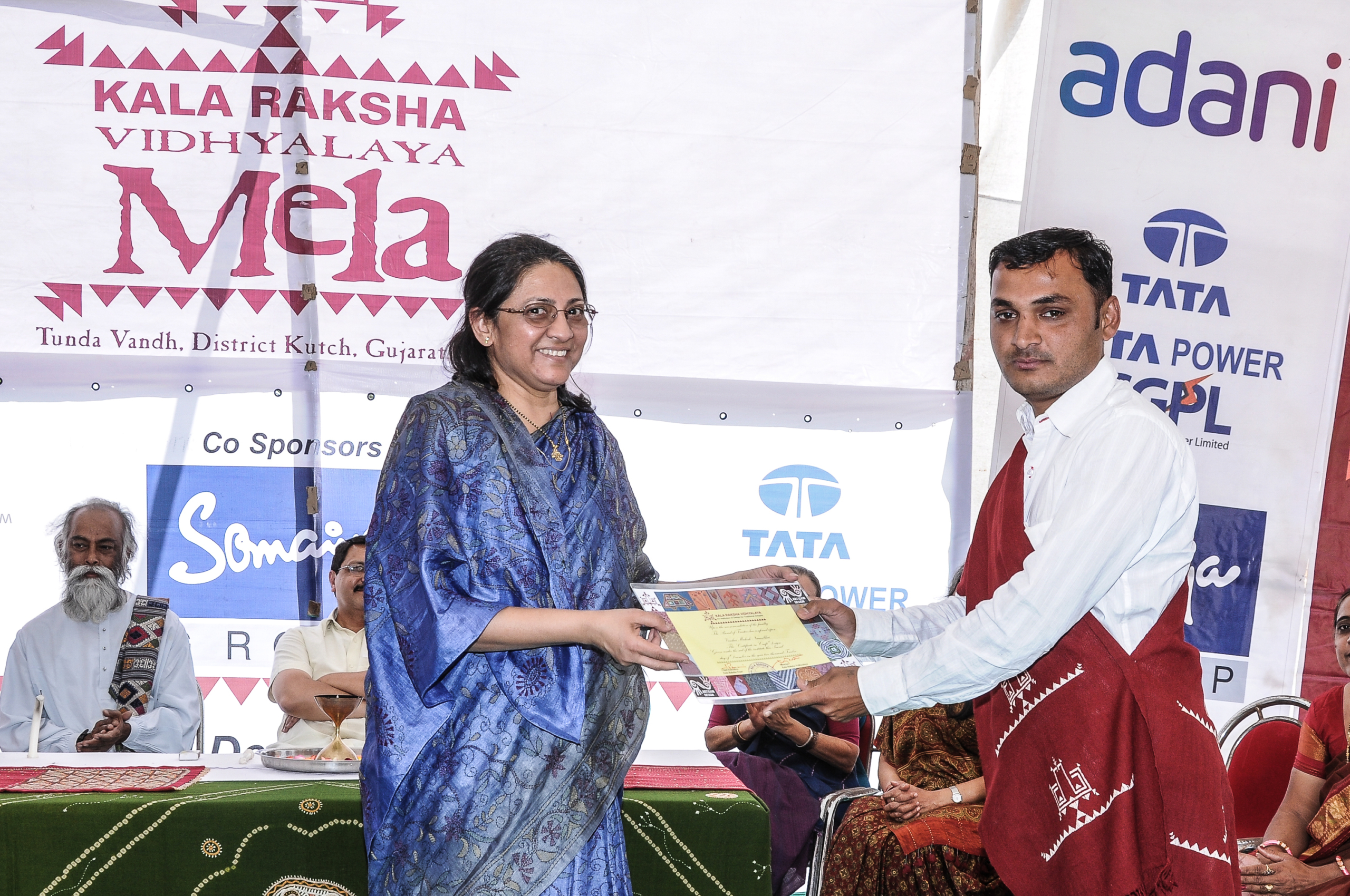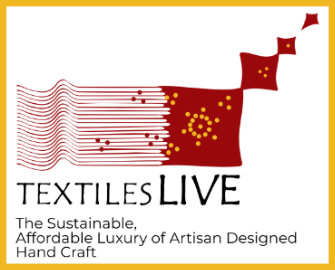 Akib Ibrahim Khatri teaches Ajrakh hand print and natural dye in a Craft Traditions course, Ajrakhpur 2015.
Akib Ibrahim Khatri teaches Ajrakh hand print and natural dye in a Craft Traditions course, Ajrakhpur 2015.
For craft to flourish, we must move from a subsidy mindset to a professional one, and consider consumers. Traditionally, artisans and clients were intimately connected and shared understanding and criteria for evaluation of craft aesthetics and quality. Today, there is often a social or cultural disconnect. Artisans are innovating for less known markets, and clients have little knowledge of craft. Mutual respect is the casualty. Artisans who once aimed to make the best, most long-lasting work now create the most flashy, easiest to produce, and cheapest work. Consumers expect cheap craft.
We educate artisans to know markets better. But, how to also educate consumers? Connoisseurship developed in the 18th century out of a desire to cultivate and promote knowledge of arts. Today the concept is found elitist, exclusive. Can we create a more inclusive version? I would like to engage makers, explore partnerships in which artisans generate a new connoisseurship based on their criteria. I want artisans to teach us to see craft as they see it, to reconnect artisans and consumers.
The average age of craft consumers has been 65 or so. Happily, a 2020 report from the Crafts Council of England shows younger, less educated, more cautious and cost-conscious buyers gaining interest in craft. They seek authenticity, experiences, ethical and sustainable consumption. Connoisseurship takes time. We need to invest in future consumers as we invest in future artisan designers.
To foster understanding and appreciation of craft traditions, I initiated 21-day Craft Traditions courses. In just 3 weeks, students gained significant understanding of cultural history and techniques. More important, their taste changed. They learned to love the distinguishing colors and patterns of traditional textiles.
We must continue to support relevant education for artisans. At the same time, we can engage young people, give them mutually respectful experiences- real or digital exchanges that sensitize them to making, mastery, discernment, design, and sustainability. We can expose them to differences in the work of individual makers. Meeting artisans and learning from them can alter a person’s vision and engender a love of craft.
The “3rd wave” of connoisseurship emphasizes the artisanal- valuing small, personal production. As intermediaries we must catch that wave and invest in creating craft connoisseurs.



 In 2012, the Kala Raksha Vidhyalaya Convocation was sponsored by Tata Power, Adani group and the K.J.Somaiya Trust. Today, Tata and Adani have their own craft CSR projects. The K.J. Somaiya Gujarat Trust now operates the design education program as Somaiya Kala Vidya. What happened between 2012 and now?
In 2012, the Kala Raksha Vidhyalaya Convocation was sponsored by Tata Power, Adani group and the K.J.Somaiya Trust. Today, Tata and Adani have their own craft CSR projects. The K.J. Somaiya Gujarat Trust now operates the design education program as Somaiya Kala Vidya. What happened between 2012 and now?